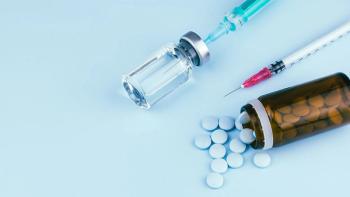
PTSM: Pharmaceutical Technology Sourcing and Management
- PTSM: Pharmaceutical Technology Sourcing and Management-07-13-2007
- Volume 3
- Issue 7
Changing Patterns for Global Pharmaceutical Growth
Although North America accounts for the largest share of the pharmaceutical market, Brazil, China, India, Indonesia, Mexico, Russia, and Turkey are projected to account for almost one-fifth of the global market by 2020. The rising participation in select countries' drug-development activities is evident by recent investment and outsourcing by the pharmaceutical majors.
Led by the United States, the North American pharmaceutical market accounts for almost half of global pharmaceutical sales, but select countries are increasing their share of the global market. By 2020, Brazil, China, India, Indonesia, Mexico, Russia, and Turkey are projected to account for almost 20% of the market. In addition to changing patterns for pharmaceutical industry growth, emerging countries also are stepping up their role in operations for drug development.
Shifting patterns of global pharmaceutical growth
In 2006, pharmaceutical sales in North America, which accounts for 45% of global pharmaceutical sales, grew 8.3% to $290.1 billion, up from growth of 5.4% in 2005, according to
While established markets in Europe and Japan showed slowing pharmaceutical sales, China and India saw robust sales growth in 2006. Pharmaceutical sales in China grew 12.3% to $13.4 billion in 2006, compared with growth of 20.5% in 2005, according to IMS Health. This slowdown in growth resulted from the government's introduction of a campaign to limit physician promotion of pharmaceuticals, according to IMS. India was one of the fastest growing markets in 2006, with pharmaceutical sales increasing 17.5% to $7.3 billion.
"Last year, India transitioned from a 'developing' market to an emerging one, with many multinational pharmaceutical companies tapping into the huge potential this market offers," said Ray Hill, IMS's general manager of global consulting, in a company release. "Several factors, including the acceptance of intellectual property rights, a robust economy, and the country's burgeoning healthcare needs, have contributed to accelerated growth in that country."
Overall, 27% of total market growth is now coming from countries with a per-capita gross national income of less than $20,000, according to IMS Health. As recently as 2001, these lower-income countries contributed just 13%.
Importance of emerging countries
The growing importance of emerging countries to the future of the global pharmaceutical market is also underscored by a 2007 analysis by
Growth of offshore drug-development activities
The rise of domestic pharmaceutical markets also is changing the participation of those countries in drug-development services. A 2006 analysis by the
"India's greatest attraction is its promise of near-immediate gratification for MPCs that seek to enhance chemistry-related activities and accelerate clinical trials," said senior partner John Wong, regional chairman of Boston Consulting Group's Asia-Pacific region and a coauthor of the 2006 report, "Harnessing the Power of India: Rising to the Challenge in Biopharm R&D", in a company release.
"Deciding whether to engage in India is not nearly as difficult as deciding how," said Simon Goodall, partner at Boston Consulting Group and coauthor of the report. "The key to any game plan in India is to determine which services best support your strategy and which options will foster success. When it comes to a strategy for investing in India, one size does not fit all."
He points out that each company must establish its own approach and take into consideration variables such as previous offshoring experience, concerns about security and control, aversion to risk, and budget. The most critical influence on a company's chosen approach is the nature and scope of the planned activities. Clinical trials, data management, or less complex chemistry activities, for example, might be safely outsourced to an established local vendor, according to the Boston Consulting Group study. Advanced chemistry work or preclinical trials, in contrast, might require a local collaborator with proven end-to-end capabilities or a captive facility tooled with top-notch equipment and staff.
The report points out that the multinational pharmaceutical companies should take at longer-term perspective when evaluating India as source for operations. This approach would consider operations as part of a global network rather than a short-term solution for less expensive custom synthesis or biostatistics work.
Big Pharma positions in India
The growing role of India in the pharmaceutical value chain is also evident in increased partnerships with Indian drug-development companies and by internal investment by the pharmaceutical majors in the region.
Earlier this year,
In a separate multiyear agreement, Bristol-Myers Squibb expanded its relationship with
In March 2007,
China's role in the pharmaceutical value chain
Just as India is raising its profile in the pharmaceutical value chain, so is China, and key considerations for the pharmaceutical industry are how to position its drug-development activities in India and China and how to balance internal operations and outsourcing activities in those countries.
While analysts say the offshoring strategies should involve both countries in the near and the longer terms, China and India require differing business models. "Outsourcing some of a company's 'excess' leads to India is a great way to quickly ease bottlenecks and access a broad and reliable vendor base," said Kim Wagner, partner at Boston Consulting Group and coauthor of the 2006 report "Looking Eastward: Tapping China and India to Reinvigorate the Global Biopharmaceutical Industry," in a company release. "In contrast, the optimal business model in China is generally the captive R&D center, which helps ensure a stake in that country's huge potential market in the longer term."
China's increasing significance in the R&D strategy of the pharmaceutical majors can be seen by several recent investments.
In May 2007,
GSK also has a growing R&D presence in China. For the past decade, the company has collaborated in discovery with the Combinatorial Chemistry Laboratory at the
GSK has its Chinese headquarters in Shanghai and major offices in Beijing, Tianjin, and Hong Kong. The company employs more than 2200 people in China and pursues all its businesses there: prescription medicines, vaccines, and over-the-counter medicines. It has manufacturing plants in Shanghai, Tianjin, and Suzhou.
In November 2006,
"The Shanghai center will allow us to combine modern drug-discovery approaches with those of traditional Chinese medicine that have been used to treat patients in China for thousands of years," said Daniel Vasella, chairman and CEO of Novartis, in a November 2006 press release. "This new research center will help Novartis contribute to the needs of patients in China and elsewhere and has the potential to become a global center for biomedical innovation."
The Shanghai center will become the eighth site within the Novartis's R&D network. Scientists will initially work in a 5000-m2 start-up facility that was scheduled to open in May 2007. Construction of a permanent 38,000-m2 facility for approximately 400 scientists will begin in July 2007. The site will also include an integrated exploratory development center that will closely collaborate with basic research and local academic centers to further develop the concept of mechanism-based medicine and leverage emerging new technologies.
Novartis ranks as the fourth-largest pharmaceutical company in the Chinese hospital market with a compound annual sales growth rate of more than 30% during the last five years, according to the company. In February 2006, construction began on a $83- million development and production plant in Changshu, Jiangsu Province, scheduled to open in 2007.
The company also has R&D collaborations with Chinese partners. Novartis has a research partnership with the
In March 2007,
In March 2007,
In January 2002, Novo Nordisk established an R&D center in Beijing. After five years of R&D activity in China, Novo Nordisk decided to cooperate with CAS and fund $2 million in supporting research in diabetes and biopharmaceuticals.
In 2006, Novo Nordisk expanded its production facilities in Tianjin, China and designated the Tianjin plant as Novo Nordisk's primary production base in the Asia Pacific region for supply to China and export markets. The expansion included a new assembly plant for Novo Nordisk's "NovoPen 3" insulin pen as well as an expansion of current packaging facilities for "Penfill" insulin cartridges and "FlexPen" prefilled insulin pens. Novo Nordisk's first plant in Tianjin was built in 2002, and the new plant was built on its existing 40,000-m2 site.
In December 2006,
Reflecting the growing importance of China in its business strategy,
Investment in other emerging pharmaceutical markets
In addition to China, the large pharmaceutical companies are also investing in other emerging pharmaceutical markets.
In April 2007, Novo Nordisk inaugurated a major expansion of its production facilities in Montes Claros, Brazil. The new 37,000-m2 plant is the largest manufacturing facility of Novo Nordisk outside Denmark and represents an investment of approximately $200 million. According to Novo Nordisk,the facility is the largest single investment in the history of the pharmaceutical industry in Brazil.
The new unit will increase Novo Nordisk's insulin manufacturing capacity in Brazil significantly. The plant will formulate and fill insulin into 3-mL "Penfill" cartridges, which are used in the company's pen systems. Approximately 95% of the total volume produced in the Montes Claros plant will be exported to other countries such as Germany, Austria, the United Kingdom, Ireland, Australia, New Zealand, Canada, and later to several developing countries.
Novo Nordisk recently approved an additional investment of $50 million for the construction of a manufacturing facility for the "FlexPen," prefilled insulin pen in Montes Claros. The new FlexPen facility is expected to become operational by 2009.
Articles in this issue
over 18 years ago
Agreements and contractsover 18 years ago
Stall Out in R&D Outsourcingover 18 years ago
Regulatory and association newsover 18 years ago
Mergers, acquisitions, and restructuringover 18 years ago
API watchover 18 years ago
Peopleover 18 years ago
ExpansionsNewsletter
Get the essential updates shaping the future of pharma manufacturing and compliance—subscribe today to Pharmaceutical Technology and never miss a breakthrough.





